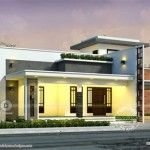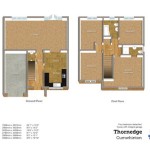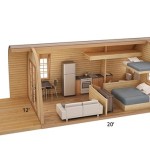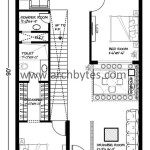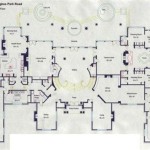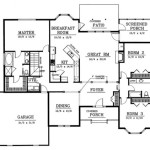Second Empire Home Plans: A Guide to Grandeur and Elegance
The Second Empire architectural style, prevalent from the 1850s to the 1880s, evokes images of opulent mansions and stately public buildings. Characterized by its distinctive Mansard roof, this style, popularized during the reign of Napoleon III in France, made its way across the Atlantic and became a favored choice for affluent homeowners and civic leaders in the United States. This article delves into the key elements of Second Empire home plans, exploring their defining characteristics and offering insights into their enduring appeal.
Key Features of Second Empire Architecture
Several architectural features distinguish Second Empire homes. Understanding these characteristics is crucial for appreciating the style's unique aesthetic and historical significance.
1. Mansard Roof: The most defining feature of Second Empire architecture is the Mansard roof, a steep, four-sided gambrel-style roof with two slopes on each side. The lower slope is steeper and often punctuated by dormer windows, maximizing attic space and providing ample natural light. The upper slope is flatter and less visible from the ground.
2. Towers and Turrets: Many Second Empire homes feature towers and turrets, adding to their grandeur and verticality. These architectural elements often project from the main roofline, creating visually striking silhouettes.
3. Decorative Dormers: Dormers, essential for providing light and ventilation to the attic space, are often elaborately decorated in Second Empire homes. They feature ornate trim, decorative window hoods, and sometimes even miniature versions of the Mansard roof.
4. Wrought Iron and Cast Iron Details: Wrought iron and cast iron were frequently used for decorative elements such as balconies, railings, fences, and cresting along the roofline. These details add an intricate touch and enhance the overall opulence of the style.
5. Symmetry and Balance: Second Empire homes typically exhibit a strong sense of symmetry and balance in their design. The facade is often divided into equal sections, with windows and doors placed symmetrically.
Adapting Second Empire Plans for Modern Living
While Second Empire homes originated in the 19th century, their design elements can be adapted for contemporary living. Modern interpretations of Second Empire plans often maintain the distinctive roofline and incorporate updated floor plans and amenities to meet current lifestyle needs.
Considerations for Choosing Second Empire Plans
Several factors should be considered when choosing Second Empire home plans. These considerations ensure the chosen design aligns with individual preferences and practical requirements.
1. Lot Size and Orientation: The grand scale of Second Empire homes often requires a larger lot size to accommodate the building's footprint and surrounding landscape. The lot's orientation should also be considered to maximize natural light and views.
2. Budget: The intricate details and complex rooflines of Second Empire homes can make them more expensive to build than simpler styles. A realistic budget should be established early in the planning process.
3. Local Building Codes: Local building codes and regulations may have specific requirements regarding roof pitch, height restrictions, and other design elements. It's essential to ensure the chosen plan complies with all applicable regulations.
Variations in Second Empire Home Designs
Second Empire architecture exhibits variations in design, reflecting regional influences and individual preferences.
1. Italianate Second Empire: This variation incorporates Italianate elements such as elaborate brackets, arched windows, and low-pitched roofs beneath the main Mansard roof.
2. General Grant Style: Named after Ulysses S. Grant, this style is characterized by a simpler, less ornate approach to Second Empire design, often featuring a more subdued Mansard roof and fewer decorative elements.
The Enduring Appeal of Second Empire Architecture
The enduring popularity of Second Empire architecture stems from its unique blend of grandeur, elegance, and historical significance. These homes represent a distinct period in architectural history and continue to capture the imagination with their stately presence and intricate details. The Mansard roof, a defining feature of the style, not only creates a dramatic visual impact but also offers practical benefits by maximizing usable attic space.
Finding and Modifying Second Empire Plans
Numerous resources are available for finding Second Empire home plans. Architectural plan books, online databases, and custom design services offer a variety of options. Existing plans can often be modified to suit individual needs and preferences, allowing for a personalized interpretation of this classic architectural style.
Maintaining a Second Empire Home
Maintaining a Second Empire home requires attention to its unique features. The complex roofline necessitates regular inspections and maintenance to prevent leaks and ensure structural integrity. The ornate details, such as wrought iron and decorative trim, may also require specialized care and restoration.

Second Empire House Plan Victorian Plans Vintage

Second Empire Tower Allisonramseyarchitects House Plans Victorian

Second Empire House Plans Dreamhomesource Com

Untitled Victorian House Plans Mansion Floor Plan Homes

Second Empire House

The Second Empire 05311 Allison Ramsey Architects

Second Empire Style Christine Huckins Franck Architect
:max_bytes(150000):strip_icc()/Second-Empire-Massachusetts-56a02a225f9b58eba4af36fb.jpg?strip=all)
Second Empire Architecture Under The Mansard Roof

Pin On Room Decor

1870 Was A Good Year Victorian House Plans Homes Plan

